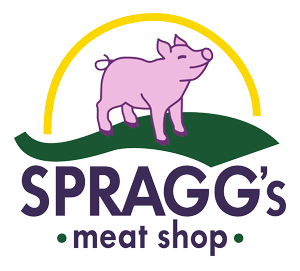Like any food, there are tips and tricks that have to be understood before mastering the product and pork is no exception. At Spragg’s we want you to have the most exceptional dining experience with our pork products, which is why we’ve gathered all of our knowledge in one place to provide the ultimate cheat sheet on cooking pork.
Cooking Temperatures
Legend has it that pork has to be cooked well done in order to be considered safe for consumption, but this can often result in dry, tough meat. Luckily, knowledge around pork food safety has improved in recent years and production methods have also advanced in Canada. We now know that pork can be cooked safely to 71°C/160°F or less, which produces juicy, tender pork. The exception to the rule is ground pork and sausage, which should be cooked thoroughly.
For more information on safe internal cooking temperatures, click here.
Use a Meat Thermometer
Take the guesswork out of cooking your pork by using a meat thermometer. This tool is often an essential in every kitchen, and for good reason. Remember, pork can be cooked safely to 71°C/160°F or less.
For accurate readings, follow the following guidelines provided by The Old Farmer’s Almanac:
- For roasts, steaks, and thick chops, insert the thermometer into the center at the thickest part, away from bone, fat, and gristle.
- For whole poultry, insert the thermometer into the inner thigh area near the breast but not touching bone.
- For ground meat (such as meat loaf), insert the thermometer into the thickest area.
- For thin items such as chops and hamburger patties, insert the thermometer sideways.
Additional Resources:
Want more details? Here are some reading materials to help you out:
